How to Handle Last Minute RFPs
/It's Thursday at 4:00 p.m. and you receive an email marked with that pesky ! from one of your existing (or potential) clients. The subject line reads "NEW LEAD - RFP DUE FRIDAY EOD." We've all had that happen, and just when you had hopes that you'd be able to leave a little early on a Summer Friday to head out to the lake with your friends, your heart sinks and you go into a temporary "WHY ME!?!" mood. But Alas! Isn't it that rush of a deadline that keeps us going? The fact that we might be the one to show this client what they have never seen before and make all of his/her event dreams a reality? By now, your adrenaline is pumping and your head is spinning with ideas. Your brain is telling you to WOW them and images of all the ideas you've wanted to pitch are popping through that slideshow in your mind. So how do we dial down our overflowing ideas and bring it to basics, ensuring we don't over promise on what we can actually deliver, and giving the client what they need in a timely manner? The AZA staff delves into this topic with our best practice recommendations for handling last minute RFPs. While we've heard many of these before, a refresher course is always nice!
1. Clarify the Needs vs. Wants. We always want to WOW the client and show them every single thing that is possible and how to maximize the guest experience in one of our destinations. But don't over exhaust yourself. Showing the client too many options can be confusing and overwhelming. The first step is to always reach out to the client and identify what the true needs are. What do they have to have by tomorrow, and what can wait until next week?
2. Identify the Budget. Budget is a tricky subject but don't walk on eggshells. It is not unprofessional to ask what the budget was in the past for specific aspects of a program. If the client or third party does not know the budget, try another approach by throwing out a number. Are we talking $500,000? They will likely respond with a "Oh no way!" or "Yes, or more!"
3. Understand the Client. Know your client demographics to understand the best approach for hotels, venues, food and beverage, decor, entertainment, and more. Don't waste your time by proposing an outlet that the group's demographic would likely not choose, no matter how "great" you think it is. Ask the client: What has or has not worked in the past?
4. All Hands on Deck. Call a mandatory meeting with the team to discuss the RFP step by step. Even if this RFP is not everyone's department, it is important to pull your resources. Brainstorming with a team can help narrow down your ideas to what is feasible. With any luck, your colleagues will have time to take a portion of the RFP for you. Divide + conquer!
5. Pick up the Phone. While it seems easy to copy/paste the same email to your DMC, Hotel, Venue and other partners, follow that up with a phone call to ensure they received it and are able to assist in your request If you don't hear back from one via email or phone, move on to the next. Time is of the essence!
6. Reach into your Idea Book. At AZA Events, we pride ourselves in proposal customization to ensure each proposal is unique and personal. Keep an idea folder for inspiration, and save them for times of urgency. At AZA, we divide our folder into subcategories for decor, production, themes, table treatments, entertainment, etc. derived from a melting pot of industry publications, social media, conference and more.
7. Recycle. When there isn't time to customize each detail, we sometimes need to recycle. Even if using a theme from a past proposal, always ensure your pricing is the most accurate, and edit to fit the client's goals, demographics, and details accordingly. Never send an exact replica of something else without first making sure it makes sense for that client.
8. Provide a snapshot of the possibilities. When you can't showcase every venue, piece of entertainment, or decor theme, provide a storyboard for additional ideas. Bullet point the highlights and include as many photos as possible. Make sure these ideas are something that would be achievable within the budget provided, being sure not to over-promise.
9. Don't Apologize. Now it's time to send the Proposal out. Don't apologize to your client that you weren't able to provide more. This makes it appear as though you didn't do your best efforts to deliver. Instead, provide them with the storyboard and tell them that there are many more options available. If they don't see something they want, invite them to ask for more. Our team will work with you one on one to create the perfect program!
10. Remain Available for Questions. Provide a number that they can reach you on (yes, even when you are out of the office), so that they can call you with any last minute questions. Even if you can't get to a computer to send something, you can always answer to the best of your availability.
Most importantly...don't panic and remember to breathe!







